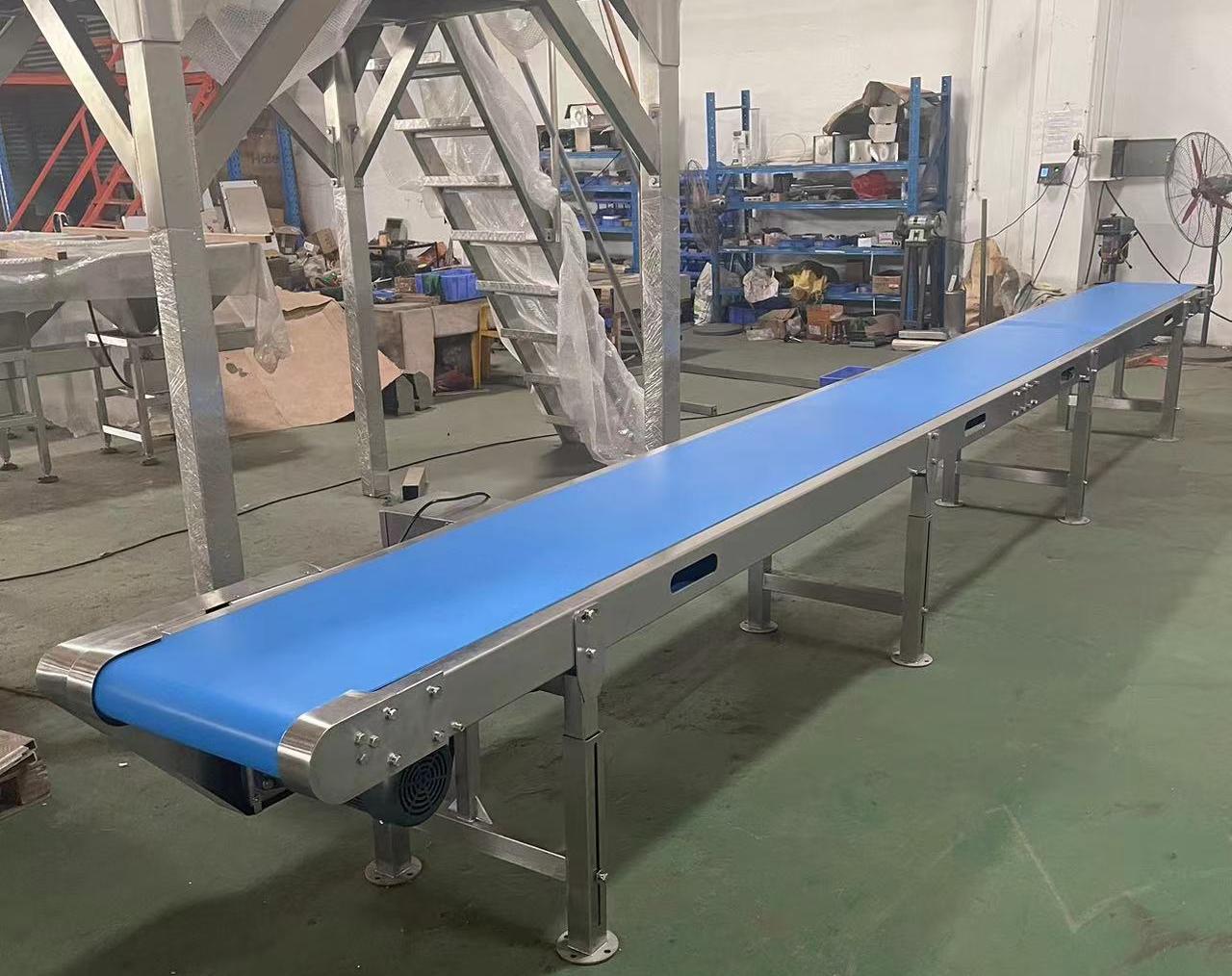In modern industrial production, conveyor systems play a central role in material handling, directly influencing overall production efficiency and performance. One critical factor often overlooked is conveyor belt width, a parameter that significantly impacts conveying capacity, material spillage, equipment wear, and operating costs.
Selecting the appropriate conveyor belt width ensures smooth, efficient material flow, minimizing waste and downtime. Whether you’re designing a new production line or optimizing your current system, understanding conveyor belt width selection criteria is vital.

Key Factors in Choosing Conveyor Belt Width
1. Material Characteristics
- Type and Shape: Bulk materials like grains or coal and packaged items such as boxes or bags have different width requirements. Typically, your belt should be 50-100mm wider than the maximum width of packaged goods to prevent spillage.
- Particle Size & Abrasiveness: Larger or abrasive materials require wider belts to distribute pressure evenly, reducing wear and tear.
- Stickiness & Moisture: Sticky or damp materials often cause build-up. A wider belt provides more space, easing maintenance and cleaning.
2. Conveying Capacity Requirements
The required throughput, usually measured in tons/hour or cubic meters/hour, directly influences belt width. Higher capacities generally require wider belts, ensuring material stability and efficiency.
3. Conveyor Belt Speed
Higher speeds may allow narrower belts, reducing upfront costs. However, increased speeds can cause:
- Material spillage
- Increased equipment wear
- Higher noise and vibration
- Reduced stability
Balance speed and width carefully for optimal performance and reduced maintenance costs.
4. Conveying Distance & Incline
- Distance: Longer conveyors often demand stronger, wider belts to handle increased tension.
- Incline: Steeper inclines may require belts with higher friction, cleats, or sidewalls, influencing optimal belt width.
5. Working Environment & Special Conditions
- Temperature & Humidity: Extreme conditions demand specialized belt materials to maintain performance.
- Corrosive & Abrasive Materials: These require highly durable, wider belts designed to withstand harsh conditions.
- Hygienic Requirements: Industries like food and pharmaceuticals have strict hygiene standards, necessitating easy-to-clean, food-grade belts.
6. Industry Standards & Regulations
Always adhere to relevant industry standards, such as FDA-approved materials for food conveyors, to ensure compliance and safety.
7. Cost-effectiveness & Maintenance
Consider long-term operational and maintenance costs. Wider belts can reduce maintenance by lowering wear and tear but involve higher initial investments.
Common Conveyor Belt Width Specifications
- Light-duty conveyors: 200mm, 300mm, 400mm, 500mm, 600mm, typically used for precision sorting, lightweight materials, and food production.
- Medium-duty conveyors: 650mm, 800mm, 1000mm, 1200mm, widely used in mining, ports, power generation, and construction industries.
- Heavy-duty conveyors: 1600mm, 1800mm, 2000mm+, designed for large-scale industrial applications, like mining and power plants.
Custom widths are also available for specific industrial or food processing applications.
Special Considerations for the Food Industry
The food industry demands exceptional hygiene and safety standards:
- Sanitation: Choose FDA-approved materials like PVC belt , PU belt, or stainless steel mesh belts for easy cleaning.
- Cleaning Convenience: Select belt widths that allow convenient access for cleaning tools and personnel.
- Customization: Food conveyors frequently require custom dimensions and special features to meet precise production needs.
- Material & Processing Compatibility: Match belt width and design to food characteristics, whether fragile baked goods or draining/cooling applications.
Conclusion
Selecting the right conveyor belt width is a systematic process that involves evaluating material characteristics, capacity requirements, belt speed, distance, environment, standards, and cost-effectiveness. Particularly in the food industry, careful selection prioritizes hygiene, safety, and ease of cleaning. A well-chosen belt width significantly enhances efficiency, reduces costs, and supports sustainable growth.
Ready to Optimize Your Conveyor System?
Contact our experts today to discuss the ideal conveyor belt width tailored to your specific production needs. Enhance your operational efficiency, reduce downtime, and achieve long-term savings.
Reach out now and elevate your material handling capabilities!

